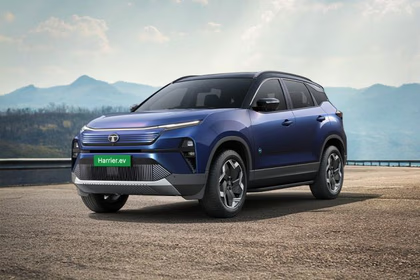In 2023, the global automotive landscape is rapidly evolving, driven by significant advancements in electric vehicle (EV) technology and increasing environmental awareness. With EVs, hybrids, and traditional gas cars competing for consumer attention, it’s important to understand their performance and cost implications. This article will offer a comprehensive comparison of these vehicle types, helping you make an informed decision on your next car purchase.
1. Understanding the Basics: EVs, Hybrids, and Gas Cars
What Are Electric Vehicles (EVs)?
Electric vehicles, or EVs, are powered entirely by electricity, using batteries that can be recharged from an external power source. Brands like Tesla, Rivian, and Lucid Motors are leading the charge in EV innovation. According to Bloomberg Green, global EV sales are expected to surpass 10 million units in 2023, reflecting their growing popularity.
How Do Hybrids Work?
Hybrid vehicles combine a gasoline engine with an electric motor, offering improved fuel efficiency compared to traditional gas cars. Hybrids can switch between or combine both power sources to optimize performance and fuel economy. Notable examples include the Toyota Prius and Hyundai Ioniq.
Traditional Gas Cars: Still Relevant?
Gasoline-powered vehicles have been the industry standard for over a century. While they offer wide availability and typically lower upfront costs, their environmental impact and fuel expenses are significant concerns. Despite this, Reuters Mobility notes that gas cars still accounted for over 70% of global vehicle sales in 2022.
2. Performance Comparison: Speed, Range, and Efficiency
Speed and Acceleration
- EVs: Known for their impressive acceleration, EVs like the Tesla Model S Plaid can go from 0 to 60 mph in just 1.99 seconds, making them some of the fastest cars on the market.
- Hybrids: While not as quick off the line as EVs, hybrids provide a balanced performance with both electric and gasoline power.
- Gas Cars: High-performance gas models can match EV acceleration, but typical consumer models lag behind in instant torque.
Range and Refueling
- EVs: The range of electric vehicles varies widely, with top models like the Lucid Air offering up to 520 miles on a single charge. However, charging infrastructure and time are considerations, with InsideEVs reporting an average charging time of 30 minutes to an hour for fast chargers.
- Hybrids: Hybrids typically offer a combined range exceeding 600 miles, thanks to their dual power sources.
- Gas Cars: Gasoline cars provide the convenience of widespread refueling stations and quick fill-up times, with ranges usually between 300 to 500 miles.
Efficiency and Environmental Impact
- EVs: Zero tailpipe emissions make EVs the most eco-friendly option. According to the IEA, shifting to EVs could cut global CO2 emissions by 1.5 gigatons annually by 2030.
- Hybrids: While better than gas-only cars, hybrids still emit CO2, albeit at lower levels.
- Gas Cars: Conventional cars are the least environmentally friendly, contributing significantly to air pollution and climate change.
3. Cost Analysis: Purchase Price, Maintenance, and Savings
Initial Purchase Price
- EVs: Typically higher than gas cars, though prices are decreasing as battery technology advances. For instance, the average EV price dropped by 13% in 2023, according to AutoCar.
- Hybrids: Often positioned between EVs and gas cars in terms of cost, hybrids offer a middle-ground option for budget-conscious buyers.
- Gas Cars: Generally the most affordable upfront, though this is changing with rising fuel prices and potential future taxes on emissions.
Maintenance and Operating Costs
- EVs: Lower maintenance costs due to fewer moving parts and no need for oil changes. Battery University states that EV owners can save up to 50% on maintenance compared to gas cars.
- Hybrids: Require regular maintenance for both the gasoline engine and electric components, leading to moderate costs.
- Gas Cars: Regular maintenance and frequent fuel purchases contribute to higher long-term expenses.
Tax Incentives and Savings
- EVs: Many countries offer tax incentives and rebates for EV purchases, significantly reducing the overall cost. For example, the U.S. offers up to $7,500 in federal tax credits.
- Hybrids: Some incentives are available, though less generous than those for full EVs.
- Gas Cars: Typically no financial incentives, and owners may face future penalties for emissions.
4. Making the Right Choice: Tips and Recommendations
Consider Your Driving Needs
- Commute Distance: If you have a long commute, an EV with a high range or a hybrid might be ideal. Gas cars can be a fallback if charging access is limited.
- Environmental Concerns: If reducing your carbon footprint is a priority, an EV is the best choice.
- Budget Constraints: Evaluate total cost of ownership, including potential incentives, to find the most cost-effective option.
Where to Buy
- EVs and Hybrids: Major manufacturers like Tesla, Hyundai, and Ford offer online direct sales, while traditional dealerships also stock a variety of models.
- Gas Cars: Widely available at dealerships, with more options in the second-hand market.
Conclusion: The Future of Automotive Choice
In 2023, the decision between EVs, hybrids, and gas cars hinges on personal priorities such as environmental impact, budget, and driving habits. Electric vehicles offer the best environmental benefits and long-term savings, while hybrids provide a balance of efficiency and convenience. Gas cars, though still prevalent, face increasing scrutiny and costs. As technology evolves, staying informed will help you make the best choice for your lifestyle and the planet.
Are you ready to make the switch to greener driving? Share your thoughts and experiences in the comments below! With the automotive industry’s shift towards sustainability, now is the perfect time to consider how your vehicle choice can contribute to a cleaner future.

